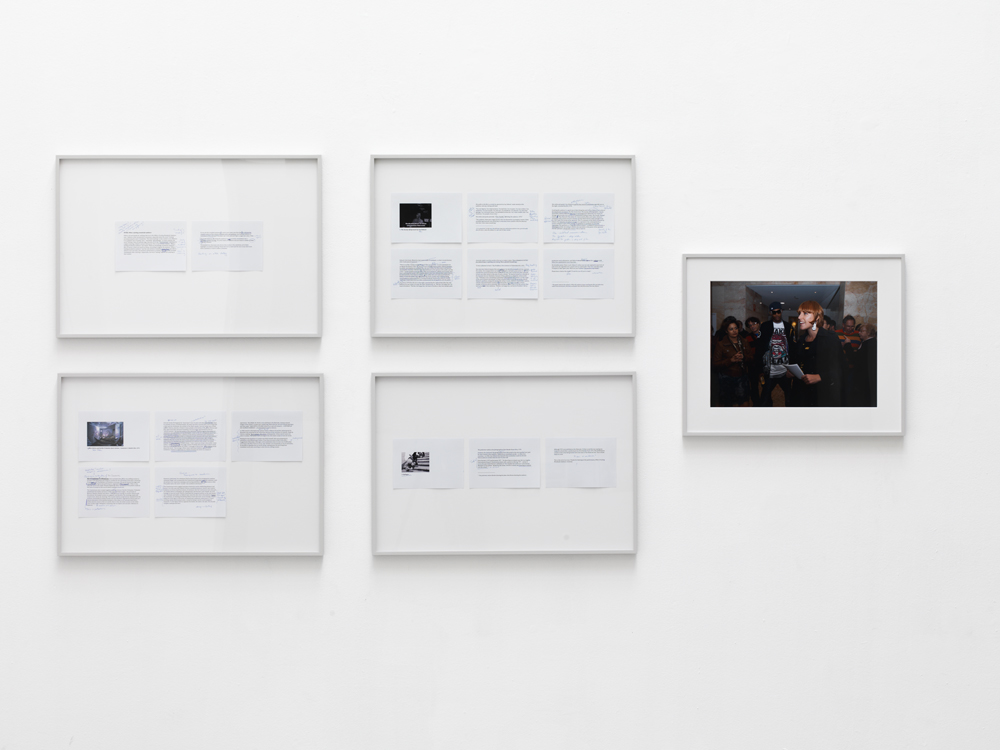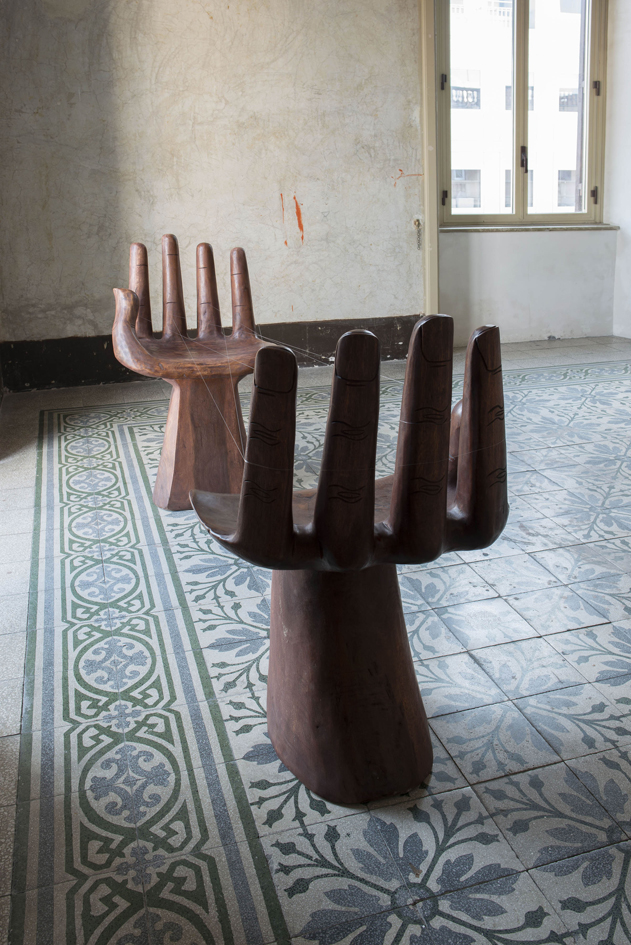Do ut des (I give that you may give back)
2009 - Sculpture (Sculpture)
Mariana Castillo Deball
Do ut des (2009) is part of an ongoing series of books that Castillo Deball has altered with perforations, starting from the front page and working inward, forming symmetrical patterns when each spread is opened. The books belong to O Mundo dos Museus (The World of Museums), a collection conceived by the Brazilian designer Eugênio Hirsch in the 1970s. More than simply a catalogue of artworks, each offers the reader a promenade through a different world museum and its functioning, starting with photo reportage of the building, its urban landscape and architecture, the management and restoration of works, and visitors walking though the galleries. Collaged images of people alongside artworks indicate the works’ dimensions in relation to the human scale. The act of drilling into different institutional representations is a direct intervention into history itself, inviting us to question its representation. The title refers to a Latin phrase that applies to civil law, roughly translating as “I give that you may give back.” This allusion to a form of exchange, negotiation, and reciprocity applies as much to the relationship between the artist and the audience as to that between the artist and the object. The implication that the artist is giving the viewer something so that she will receive something back demands a level of critical reflection and interaction with the work. With these books, Deball infers that history gives these representations to us so that we can detour from them.
The practice of Mariana Castillo Deball (b. Mexico City, 1975) is centered on intensive research. In weaving together perceived facts and legends, the artist deconstructs how we understand tradition, liberating content from imposed ideological legacies. Mariana Castillo Deball’s collaborative research—in particular in the domain of science, geology, archaeology and literature—is manifested and synthesized into her multimodal sculptural practice. The archive is a significant aspect of the artist’s practice, whereby the research conducted in the creation of her sculptures is culminated, catalogued and preserved. Deball is not only interested in traces of the past, her multidisciplinary approach allows her to study the different ways in which a historical object can be read today.
Colors:
Related artist(s) to: Mariana Castillo Deball » Falke Pisano, » Dora GarcíA, » Will Holder, » Adriana Lara, » Claire Fontaine, » Danh Vo, » Dani Gal, » Douglas Gordon, » Erick Beltrán, » Frances Stark

© » KADIST
Claire Fontaine
2006Foreigners Everywhere is a series of neon signs in several different languages...

© » KADIST
Dora Garcia
2008Dora Garcia’s work is a result of institutional critique and more generally that of language, following the conceptual artists of the 1960s like Weiner and Kosuth and Fraser from the 1980s and 1990s...

© » KADIST
Erick Beltran
2010In his posters, prints, and installations, Erick Beltrán employs the language and tools of graphic design, linguistics, typography, and variations in alphabetical forms across cultures; he is specifically interested in how language and meaning form structures that can be misconstrued as universal...

© » KADIST
Dora Garcia
2012KLAU MICH is a TV and performance project by Dora García with Ellen Blumenstein, Samir Kandil, Jan Mech, TheaterChaosium, and Offener Kanal Kassel, during the 100 days of dOCUMENTA (13)....

© » KADIST
Douglas Gordon
1996In Monster (1996-97), the artist’s face becomes grotesque through the application of strips of transparent adhesive tape, typical of Gordon’s performance-based films that often depict his own body in action...

© » KADIST
Adriana Lara
2014Lara uses things readily at hand to create objects and situations that interrogate the processes of art and the spectrum of roles that art and artists play in society...

© » KADIST
Douglas Gordon
2004Douglas Gordon’s single-channel video The Left Hand Can’t See That The Right Hand is Blind, captures an unfolding scene between two hands in leather gloves—at first seemingly comfortable to be entwined, and later, engaged in a struggle...

© » KADIST
Douglas Gordon
2002Blind Spencer is part of the series “Blind Stars” including hundreds of works in which the artist cut out the eyes of Hollywood stars, in a symbolically violent manner...


